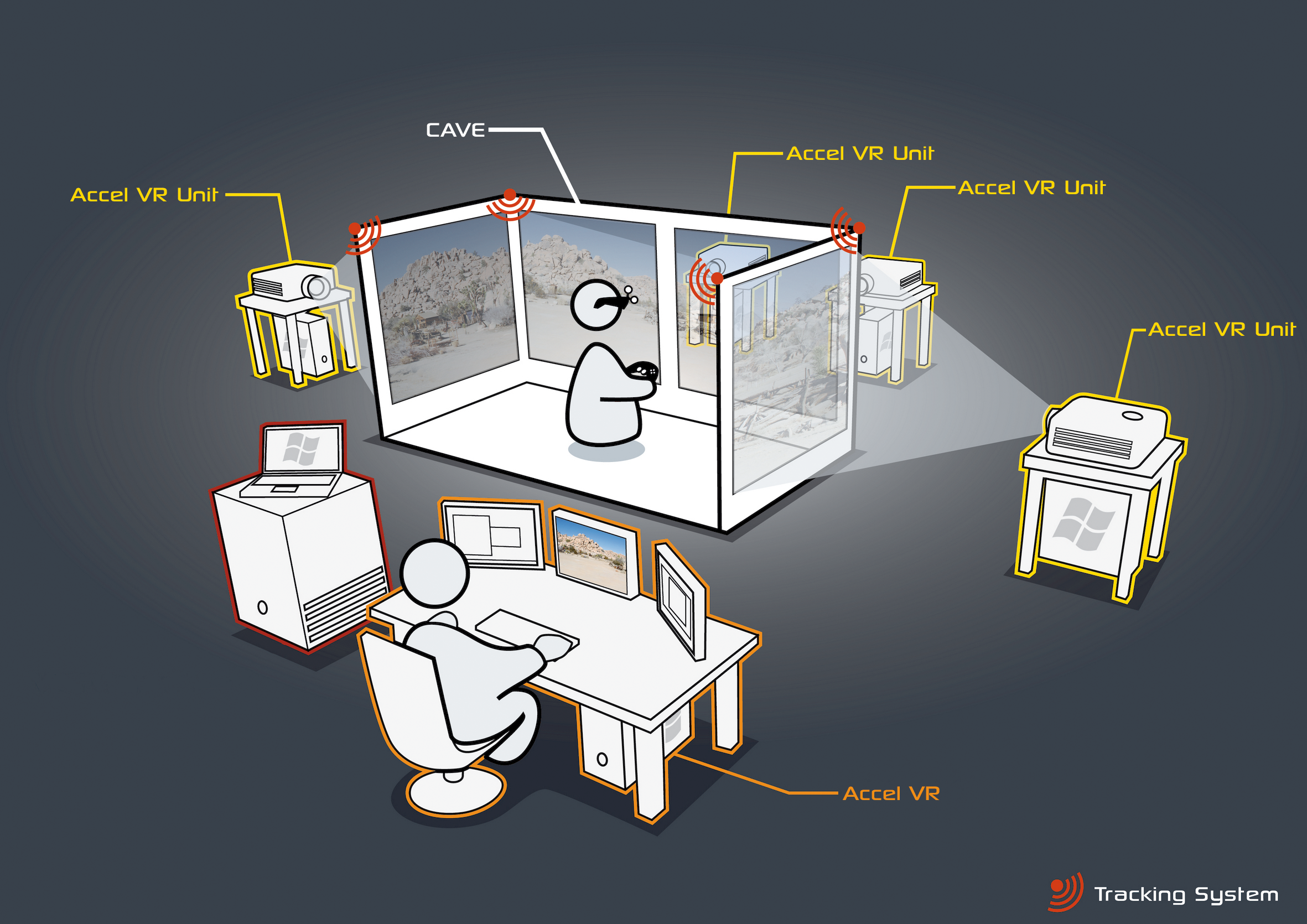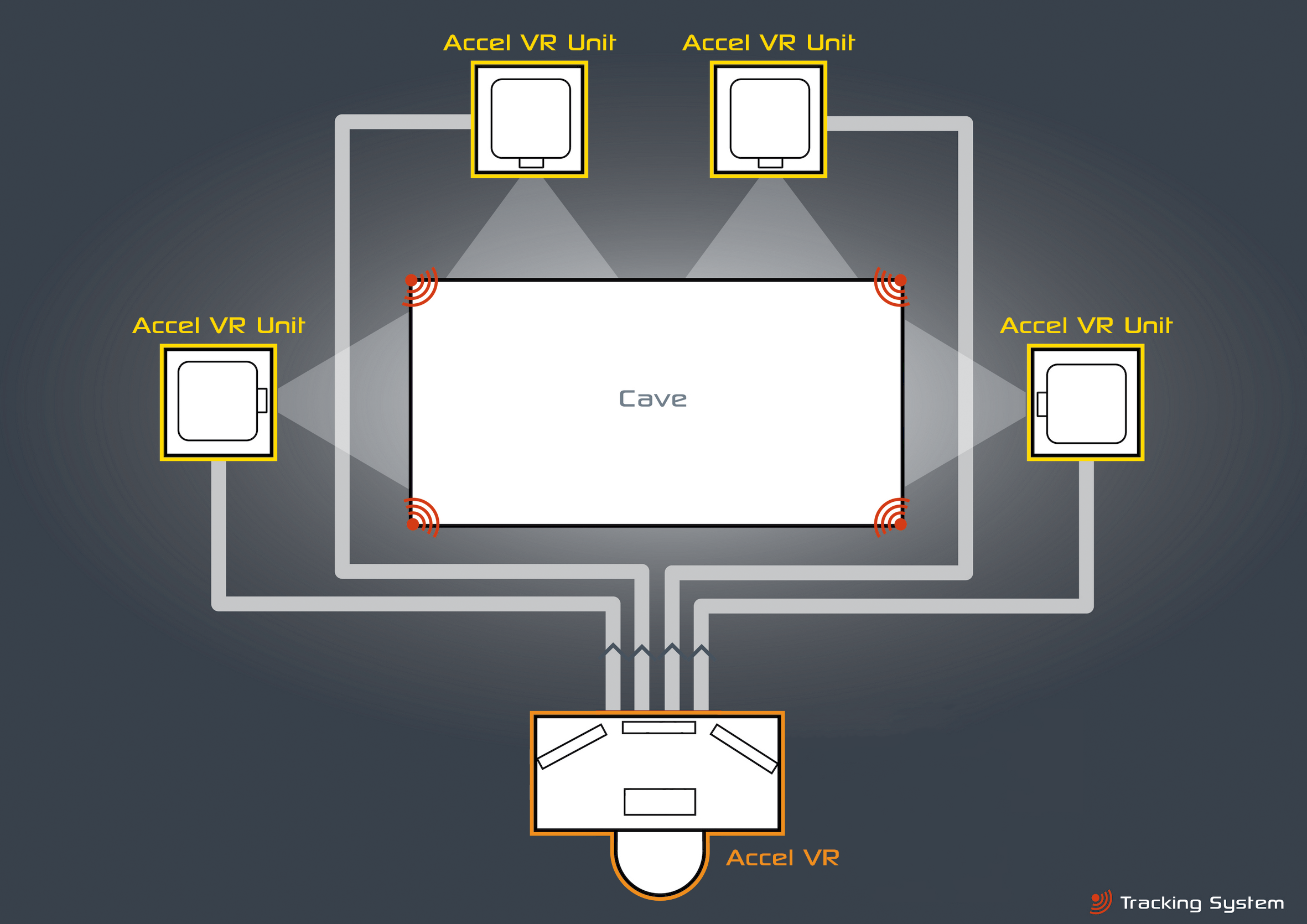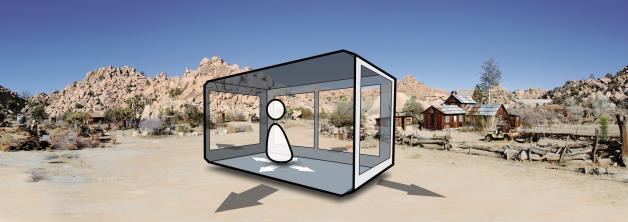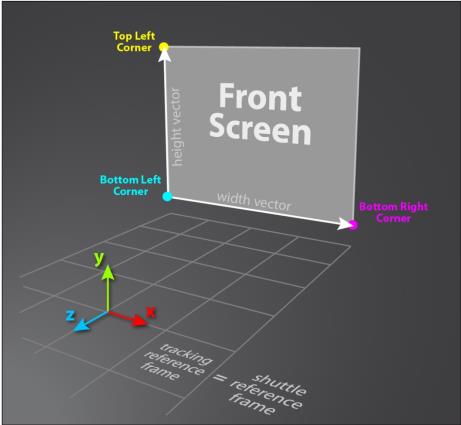Introducing Accel VR
General Description
Accel VR is a virtual reality software solution designed for the visualization of Digital Aspect Mockups on a 1:1 scale on multi-screen immersive systems.
Visualization on a 1:1 scale makes it possible to assess objects with regard to their actual size and complements the photorealistic rendering quality of the Lumiscaphe rendering engine with an extra dimension of realism.
Accel VR conforms to a wide range of configurations. Its use is suited to various visualization profiles and modes, such as multi-screen devices, image walls based on juxtaposed projections, immersive systems of the C.A.V.E. type or Head Mounted Displays.

Figure 5 : Overview of a CAVE operating with Accel VR.
Accel VR also supports multiple stereoscopic display modes and can be interfaced with various tracking systems to enhance sensorial experimentation during project review.
Operating principles
Accel VR works with two different entities: Accel VR Pilot 2019.2 and Accel VR Unit 2019.2.
It is very important to understand the role of each entities for installing the software.
Accel VR Unit 2019.2 calculates images in real time and displays the rendering on a remote screen of the visualization device while Accel VR Pilot 2019.2 manages calculation units that generate images on devices such as a zSpace or a VR headset.
Accel VR Pilot 2019.2 and Accel VR Unit 2019.2 are able to communicate within local network but could be run on a single computer.
It's recommended to test your infrastructure configuration to be sure entities correctly communicate.

Figure 6 : Accel VR software entities operating principle.
Multi-screen or stereoscopic configurations require a number of computation units to provide optimal rendering fluidity (minimum 30 images per second). Each Accel VR Unit computes the images for one projection surface only. A stereoscopic projection surface will display two separate images and therefore has to be considered as two projection surfaces as far as the system size is concerned.
Each Accel VR Unit 2019.2 station is responsible for its own rendering piece. The final image consisting of all the screens of the visualization device is a mosaic of synchronized renderings.
Accel VR Pilot 2019.2 is the control station, its graphical interface allows an operator to import and manipulate the Digital Aspect Mockups prepared in Patchwork 3D Design or Patchwork 3D Engineering, or layouts produced in Patchwork Explorer.
Accel VR establishes also the link between the computation units, Accel VR Pilot 2019.2, the tracking system, and the various navigation devices (Logitech® gamepads, Xbox 360® gamepad). It distributes the load of the images to be computed to the Accel VR Unit 2019.2 in a synchronized manner.
The two-part architecture of Accel VR makes it possible to manage the singular nature of the various possible hardware configurations and visualization devices.
Understanding the Exploration Shuttle
Schematically, the installation can be considered as a mobile virtual space (often compared to an exploration shuttle) containing windows that are open on the world (the projection screens, VR headset, zSpace ).
The observer can move around in this space and observe the world through these windows.

Figure 7 : Exploration shuttle.
Frames of Reference in Accel VR
The fifth frames of reference used in Accel VR are:
- the world frame,
- the shuttle frame,
- the tracking frame,
- the head frame,
- the frame of the devices (right hand or left hand).
The world frame is the frame used in the database. Its origin is the center of the grid visible in Accel VR Pilot.
The shuttle frame is represented in the following scheme. Setting the origin of the shuttle frame at the center of the room is recommended. Its axes are positioned so that X and Y axes are collinear to the plane of the main window (front window) and Z axis is orthogonal to it.
The tracking frame and the shuttle frame are superimposed when the tracking system is calibrated according to the recommendations of the configuration assistant.

Figure 8 : Shuttle and tracking frames of reference.
The head frame is controlled by the Head Manipulator.
- In the case of using a CAVE with tracked glasses, its origin is at the center of mass of the tracking targets or on one of them.
It is highly important that in the tracking software, the frame is oriented so that the X axis points to the right (when looking through the glasses) and either Y or Z is vertical (based on the overall vertical of the tracking system). The position of each pupil center is defined with regard to this origin. - In the case of using a VR headset, this frame of reference is provided by the headset software (HTC VIVE® or Oculus Rift®). Please follow the calibration process of Steam VR room.
- In the case of using a zSpace, please follow the VR glasses calibration process of the manufacturer.
